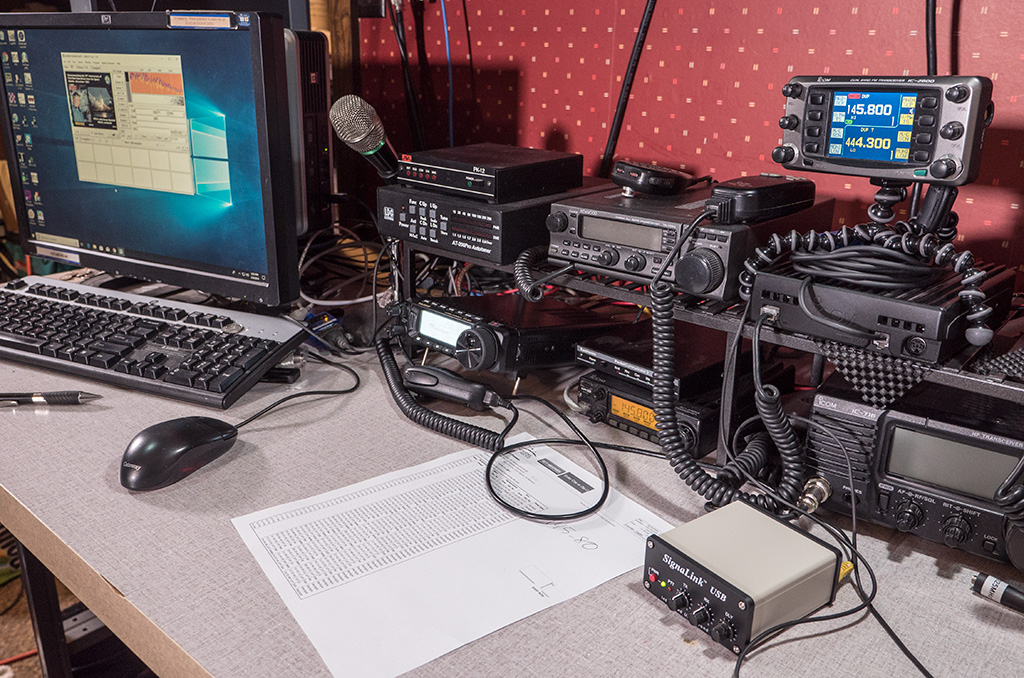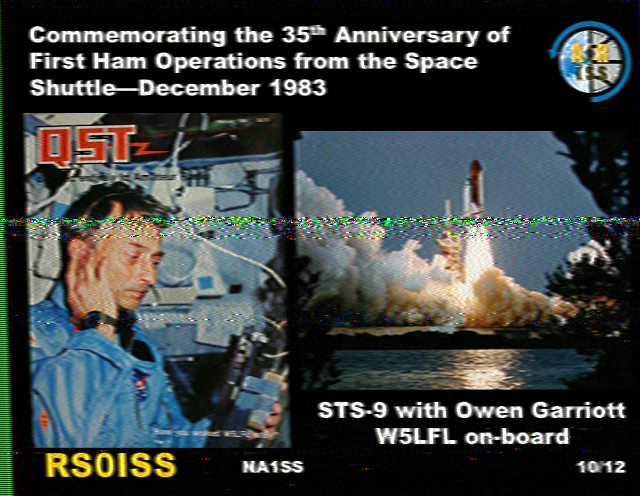Slow Scan or SSTV is a method of sending still pictures or images over the airwaves. Most frequently you will find SSTV operations on the HF bands, notably on 20 meters, but there is also a bit of SSTV activity on the 2 meter band, especially when the International Space Station activates their slow scan amateur station. Slow Scan tv events happen infrequently from the ISS, usually occurring every few months depending on the astronauts schedule and workload. But when they do happen, you can expect a bevy of images beaming down down from space as the station passes overhead. The images usually commemorate a space event of some sort, and anywhere from 6 to a dozen images in a series will be transmitted. Now the difficult part is getting them all, as you may only receive 2 or 3 images per overhead pass. and the ISS may only pass overhead a few times a day depending on its orbit. So the challenge isn’t necessarily receiving the images, but instead how many different ones can you get.
To receive the slow scan images, all you need is a 2 meter transceiver, either a mobile or a handheld and some software running on a computer or your phone to process the SSTV tones into images. Since the ISS is line of sight when it is overhead, you don’t need a fancy setup, this handheld radio with an extended antenna will receive the signal just fine. I’m using my base radio with the speaker output plugged into an audio interface which is piped into the computer. The MMSSTV application then decodes the images. But enough about that, let’s watch it happen as the International Space Station comes into range and transmits an slow scan tv image.
Thanks for watching, I hope this piques your curiosity to try receiving images on the next ISS slow scan event. You can find out then that will be on the ARISS Slow Scan TV blog, the link is below.


Recent Comments